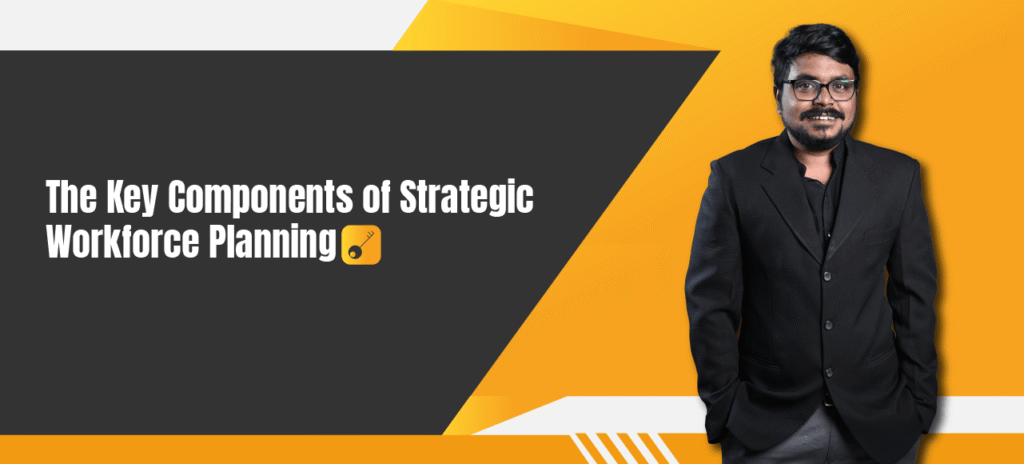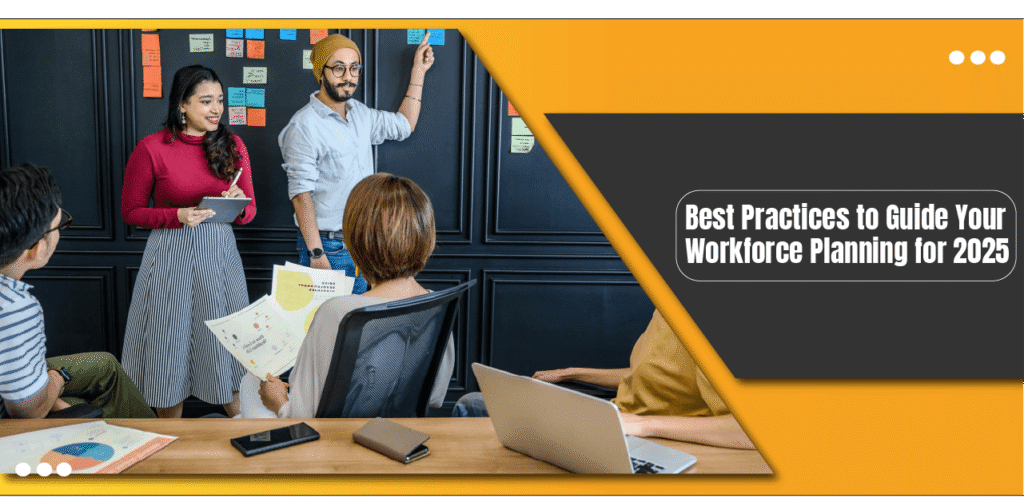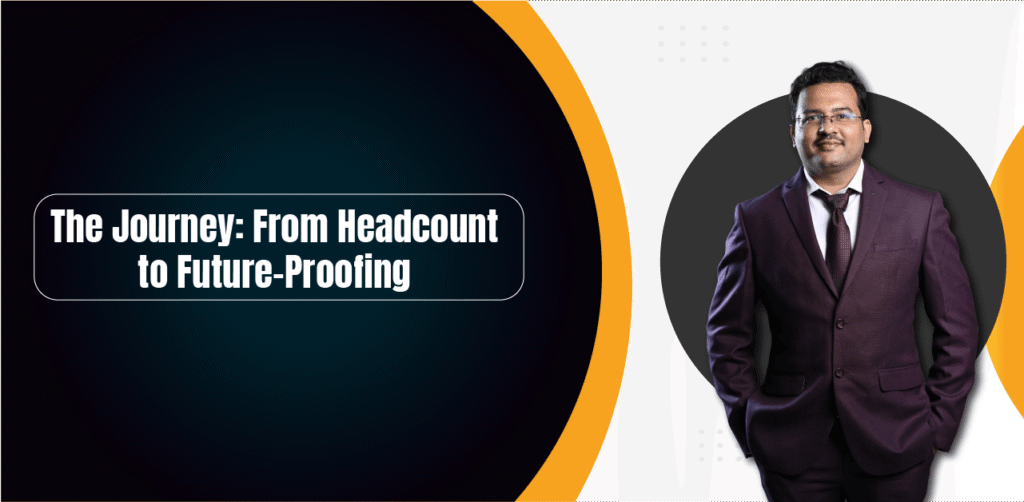In today’s fast-paced business environment, companies can’t get by with basic headcount planning anymore. To stay ahead, HR leaders and executives must evolve from reactive approaches to strategic workforce planning building teams that are agile, resilient, and aligned with long-term company goals. As technology continues to reshape industries and the work itself changes, this shift is more urgent than ever.
This article will walk you through workforce planning best practices for 2025, including practical models, smart analytics, and modern talent management. By the end, you’ll have a clear sense of how to identify skill gaps, strengthen your talent pipeline, and measure real progress on your workforce planning journey.
KEY TAKEAWAYS
Workforce planning goes far beyond scheduling interviews or filling out org charts. It’s an ongoing process that helps businesses anticipate workforce needs before challenges hit. As we move toward 2026, mastering workforce planning becomes a vital piece of future-proofing your team. This means being ready not only for today’s requirements, but for tomorrow’s changes in the labor market, regulations, and new technologies. The best organizations use workforce planning to build flexibility, adaptability, and long-term strength.
Teams that simply respond to challenges as they arise risk falling behind. Strategic workforce planning is continuous it never stops. The context and requirements for work shift often, and organizations must be ready to adjust quickly. That means using data and anticipating trends instead of relying on guesswork.
Traditional workforce approaches were about plugging a gap and moving on. Today, smart businesses align recruiting, retention, and people development closely with business goals. This lets them act fast when skills shortages crop up or when technology disrupts familiar workflows. The competitive edge goes to companies that view workforce planning as a living, breathing strategy, not a once-a-year meeting.
Managing a workforce today means facing constant change in skills, technology, and workplace expectations. Workforce planning is the strategy to keep your company prepared not just for the present moment but for whatever is coming next. It’s about synchronizing your talent needs with your business priorities and future challenges.
To get your team ready for whatever the future brings, you must use the latest workforce planning best practices. This includes leveraging analytics to guide decisions, building a culture of continuous learning, and making the most of technology in recruiting, onboarding, and retaining valuable people. The companies doing this well foster strong teams that evolve alongside the market, not just react to it.
Workforce planning is also much more than hiring. It ensures your organization has the right people, with the right skills, in the right roles now and in years to come. Instead of just filling positions, strategic workforce planning builds bridges between the company’s long-term vision and the choices HR is making every day.
This means forecasting what your workforce will need and investing in development so your staff can grow with the organization. It also means shaping culture a diverse, inclusive, and supportive workplace helps attract the best talent. Collaboration is another vital piece; HR should actively partner with leadership in other departments to spot new needs and build strong talent pipelines.
As new work models emerge and market needs shift, flexible policies (like hybrid work schedules) help attract and keep top people. Satisfied employees are more engaged and productive making the organization resilient in times of change.
Leveraging technology including AI and machine learning transforms recruiting and decision making. Automation cuts down on time spent on repetitive tasks, so HR can focus on high impact strategic priorities. And a strong employer brand, built around real investments in wellbeing and career growth, makes it easier to recruit and retain top talent in a tough market.
When you shift to a strategic approach, you won’t just fill seat you’ll improve your business in key ways:
These benefits translate into a more competitive, innovative, and sustainable organization one that’s built for success in 2025 and beyond.

Getting workforce planning right takes a broad approach. You’ll need to balance strong HR models, data analytics, and proactive talent development. That means forecasting future needs, but also understanding the qualifications and motivations of your people right now.
Using the latest analytics tools lets you spot gaps in skills or capabilities early. You can then invest in the right recruiting or training initiatives, so talent keeps pace with changes in market demand, technology, and work itself.
Listening to employees’ career goals and aspirations through regular surveys, feedback sessions, or mentorship programs is critical for engagement and retention. A motivated, upskilled workforce is a long-term advantage that attracts more top performers in the future.
Start with a clear analysis of your present workforce cataloging strengths in technical, operational, and leadership areas. This baseline gives you a solid foundation for identifying where your team stands and what you’ll need next.
Continuous assessment is key. Use digital tools to track changing skills, forecast shortages, and anticipate surpluses. This way, your organization can adjust recruiting or training programs before a problem develops. The smartest companies involve multiple departments in workforce planning, so strategies reflect business needs and people’s real experiences.
A clear, intentional talent development plan aligned with your business goals keeps your team growing. Employees who see opportunities for advancement and have reliable support are more likely to stay and perform.
Skill gaps come in two forms: technical (such as AI, data science, or cybersecurity) and soft skills (like communication, adaptability, or collaboration). Fill them by hiring new talent, retraining existing staff, and creating pathways for movement within the company.
To truly future-proof your talent pipeline, use forward looking analytics to predict workforce trends and needs. Invest in ongoing development, not just to fill today’s requirements but to keep up with tomorrow’s challenges. A culture that values learning and growth boosts morale and retention giving your business a competitive edge.
Building partnerships with universities, bootcamps, and industry groups ensures a steady flow of diverse, skilled new talent. Internship and apprenticeship programs help young professionals gain experience while preparing your workforce for future openings.
The best workforce planning today uses data at every step. Advanced analytics and scenario planning let HR forecast demand for skills, predict hiring needs, and avoid being caught off guard.
Technology streamlines the collection and interpretation of data, improving accuracy and saving time. Using AI-driven tools, companies can identify patterns and trends, making smarter decisions about recruiting, training, and resource allocation.
Continuous learning and upskilling should be integrated into your planning model. Regular review of workforce capabilities means the organization is prepared for whatever comes next from automation and AI to market disruptions and changing consumer needs.
Integrating workforce planning into the fabric of organizational strategy helps companies anticipate future skill requirements and demographic shifts. Policies that support flexibility, such as remote work options or variable hours, draw in a broader range of candidates and encourage existing employees to stay engaged.
Employee feedback matters. By including staff in the planning process and listening to what they want for their careers companies gain valuable insight into what skills are needed now and down the road. A collaborative culture drives engagement, innovation, and ownership, with employees who feel invested in both their own future and the company’s.

Don’t rely on gut feelings or assumptions. Top companies know that the best decisions in workforce planning come from analytics, forecasting, and scenario analysis. This means gathering real-time workforce data and using it to foresee productivity changes and engagement trends.
The most resilient organizations treat their HR approaches as a holistic system. Succession planning, retention, and employee development should all align with workforce plans. By connecting these strategies, companies are better positioned to adapt quickly and sustain growth over time.
We’ve moved past yearly talent reviews today, strategic workforce planning should be a continuous cycle that responds to business changes, market shifts, and evolving priorities. This mindset keeps talent pipelines healthy and gives businesses confidence, no matter what’s around the corner.
With automation and AI reshaping every industry, reskilling is at the heart of workforce planning. Prepare people not just for today but for roles that may not even exist yet. A nimble, adaptable team gives your company lasting resilience.
What if new tech changes your market? What if demand surges or drops? With solid workforce planning, HR leaders can test different scenarios, prepare, and adjust before challenges arrive. This proactive approach helps keep teams productive and motivated, even in uncertain times.
Modern planning tools help HR teams gather workforce data, analyze trends, and model future scenarios. Digital dashboards make it easier to visualize workforce health, spot risks, and explain trends to leadership. Integrating these tools into everyday processes makes workforce planning less of a chore and more of a strategic advantage.
Many companies view workforce planning as a differentiator. Using data driven models, they shift from being reactive to proactive building organizations that are ready for growth, change, and innovation.

Strategic workforce planning is about much more than counting up job titles. It’s about understanding what your people can do, developing new skills, and creating teams that can handle change. The most successful companies invest in employee development, leadership training, and strong engagement programs. These efforts close skill gaps and prepare your business for what’s next.
When HR leaders embed workforce planning in every aspect of their strategy, the result is a workforce that’s aligned with business needs, ready to adapt, and motivated to succeed.
Organizations that embrace agility in their talent strategies are positioned to transform as global trends, skill shortages, and technology reshuffle the economic landscape. Workforce planning is key to making this happen.
HR leaders must champion strategic workforce planning, guiding teams in adopting smart models, analytics, and new technologies. This keeps the organization strong, adaptable, and competitive.
To stand out, companies should:
The workforce of tomorrow will not be built by chance but by design. By embedding strategic workforce planning best practices into HR strategies, organizations can align talent with business needs, close skill gaps, and future-proof their talent pipeline.
Whether through workforce analytics, scenario planning, or effective workforce planning models, the key lies in making workforce planning a continuous, adaptive process.
At TekWissen, we help organizations navigate the complexities of talent strategies, workforce planning, and human capital management. With the right guidance, your workforce planning journey can evolve into a powerful framework that not only supports today’s objectives but also ensures long-term success in the future of work.
Explore how GCCs evolved from outsourcing to drive innovation. Discover the key differences between in-house global capability centers and traditional models.
Upskilling and reskilling strategies for global capability centers (GCCs). Optimize talent, drive innovation, and build a future-ready workforce in GCCs.
Explore 12 common workplace challenges and solutions the workforce will face in 2025. Discover solutions to boost productivity and overcome each challenge.